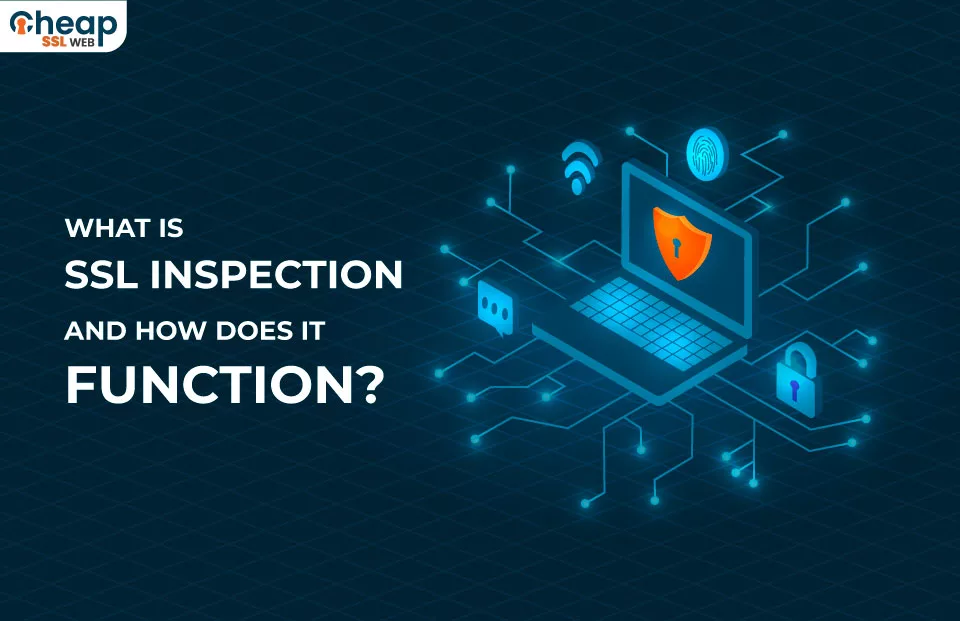What is SSL Inspection and How Does It Function?

Exploring SSL Inspection: Understanding SSL Interception for Secure Traffic Analysis
Let’s start by understanding SSL before diving into SSL inspection. SSL is a security protocol that encrypts data transmitted between a server and a client’s browser to safeguard it against cyber threats. However, SSL alone cannot protect against malicious code within encrypted traffic, making complete security impossible.
SSL inspection addresses this issue. But what exactly is SSL inspection? If you’re unsure, don’t fret. This article will provide a thorough exploration of SSL inspection.
What is SSL Inspection?
People also know SSL inspection as SSL interception or deep packet inspection SSL. SSL inspection is a procedure or process that involves intercepting encrypted traffic to identify potential security hazards/issues, such as a virus or malware. This process decrypts SSL traffic using an SSL inspection tool, enabling inspection to occur. The SSL traffic is re-encrypted upon inspection completion and transmitted to its final destination.
Companies or government entities commonly conduct an SSL inspection to guarantee the security of their networks and ensure that unauthorized individuals do not access sensitive information. Through the interception and examination of SSL traffic, these organizations can detect and prevent security risks before they can cause any harm.
Nevertheless, SSL packet inspection is controversial, as some experts believe it can jeopardize users’ privacy and security. To resolve these concerns, some companies have adopted SSL traffic inspection, a technique that allows them to scrutinize SSL traffic without decrypting it. SSL traffic inspection strikes a balance between detecting potential threats and safeguarding user data.
Ultimately, the choice between SSL packet inspection and SSL traffic inspection hinges on each business’s unique needs and priorities. While SSL packet inspection offers a more comprehensive SSL traffic analysis, it may also pose privacy and security concerns. Conversely, SSL traffic inspection prioritizes user privacy, but it may be less effective in detecting some types of security threats.
How Does SSL Inspection Work?
The process of SSL inspection involves a security device generating a false SSL certificate for the website being accessed, using a trusted root certificate authority (CA) installed on the device. The user’s web browser checks the CA and the certificate details to verify the website’s identity before establishing a secure SSL/TLS connection with the security device instead of the actual website.
The security device decrypts the SSL traffic, checks it for any malicious activity like malware or phishing attempts, and re-encrypts it with a new SSL certificate before forwarding it to the original website if it is safe. However, SSL inspection can invade user privacy by examining encrypted traffic. As a result, it is crucial to implement SSL inspection with appropriate policies and procedures to ensure network security while safeguarding user privacy.
To better understand how SSL inspection works, consider this example.
- A want to visit a website (say, example.com) using their web browser.
- B, the security device, intercepts the HTTPS request and generates a fake SSL certificate, for example.com, using a trusted root certificate authority (CA) installed on B.
- A’s browser receives and verifies the fake certificate by checking the CA and certificate details to ensure the website’s identity.
- A’s browser establishes a secure SSL/TLS connection with B instead of example.com.
- B decrypts the SSL traffic and inspects it for viruses, malware, or any cyber threat that can harm the network or the data.
- If the traffic is safe, B re-encrypts it with a new SSL certificate and forwards it to example.com.
- If the traffic is unsafe, B can act by either blocking the traffic or alerting C, the network administrator.
Importance of SSL Inspection
Various industries or sectors imply SSL inspection as a necessary process to enhance online security. Some of those sectors are:
Financial Institutions
It is used in most financial institutions to preserve the bank servers from being hacked by a hacker, who might send malware along the data packets being transferred.
Defense Sector
IT professionals working with the military consistently implement the SSL inspection process to protect their network from being compromised by cybersecurity threats, such as a trojan horse.
Meeting regulatory compliance requirements
It is also essential to meet regulatory compliance requirements. There are specific mandatory regulations that each organization has to follow, such as having a robust security measure in place to protect sensitive data. By implementing the SSL inspection process, we fulfill these requirements.
Read more about What is a Certificate Revocation List? CRL Explained
Conclusion
SSL traffic inspection is an alternative technique that allows the scrutiny of SSL traffic without decrypting it, balancing potential threats, and safeguarding user data. While SSL packet inspection offers a more comprehensive SSL traffic analysis, it may pose privacy and security concerns. It is important to ensure that SSL inspection is implemented with appropriate policies and procedures to protect user privacy while maintaining network security.